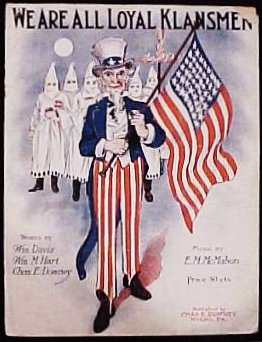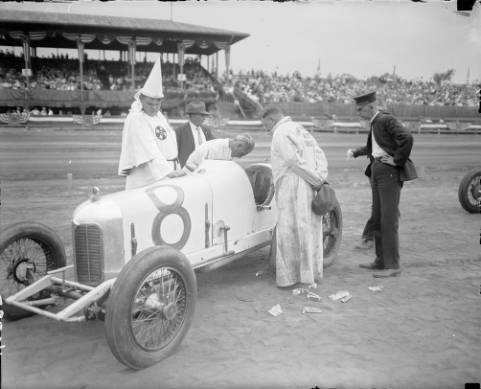 “On July 14, 1924, Mayor Stapleton addressed a Klan gathering on South Table Mountain and reaffirmed his commitment: ‘I have little to say, except that I will work with the Klan and for the Klan in the coming election, heart and soul. And if I am reelected, I shall give the Klan the kind of administration it wants.'”
“On July 14, 1924, Mayor Stapleton addressed a Klan gathering on South Table Mountain and reaffirmed his commitment: ‘I have little to say, except that I will work with the Klan and for the Klan in the coming election, heart and soul. And if I am reelected, I shall give the Klan the kind of administration it wants.'”
Quoted in Goldberg, R. (1981). Hooded Empire : The Ku Klux Klan in Colorado. Urbana, Illinois: University of Illinois Press.
Benjamin Stapleton was a card-carrying KKKlansman, #1,128. He was the KKK’s candidate, elected for mayor of Denver in 1923. He served as the Mayor of Denver for 20 years. During his tenure, Stapleton made numerous Klan appointments including two Klansmen as Managers of Safety and a Klansman as Chief of Police.
“The signal the Klan government emanated to the rest of the world was this if you’re Catholic, Jew or black, you’re not welcome in Colorado.”
– Richard Delgado, University of Colorado law professor (Rocky Mountain News Nov. 23, 1999)
Listen to this podcast to learn more:
Images of the KKK in Colorado

Image Courtesy of the Denver Public Library (https://history.denverlibrary.org/sites/history/files/Klan_member_at.jpg)


Image Courtesy of The Denver Channel (http://media.thedenverchannel.com/photo/2017/08/16/kkk%20colorado%2020_1502917779146_64324622_ver1.0_640_480.png)

Image Courtesy of the Canon City Daily Record (http://extras.mnginteractive.com/live/media/site49/2014/0410/20140410__11DRKKKw~1.jpg)

Image Courtesy of The Denver Channel (http://media.thedenverchannel.com/photo/2017/08/16/kkk%20colorado%2012_1502917780429_64324623_ver1.0_640_480.png)

Image Courtesy of the Colorado Springs Independent (https://media1.fdncms.com/csindy/imager/vintage-postcard-image-klan-parade-salida-ca-1920s/u/zoom/1305166/f50c_cover-9648.gif)
How Does This Legacy Live On?
What else is going on in St*pleton:
- Neighborhood is exclusive to higher income levels
- Racially homogeneous/white
- What was supposed to be a community with seamless boundaries feels like a gated community (full of parks, good schools, amenities)
- Lack of affordable housing and prices out moderate incomes
- Stapleton name is legacy of KKK in Denver
- Failure of the Stapleton development to live up to its goals to reflect the racial and other diversity of the surrounding communities and to provide affordable and rental housing 10% and 30% of total housing stock, respectively.
What else is this related to in Denver?
- Gentrification
- School to prison pipeline
- Racial profiling
- DPS’ Bailey Report
- White supremacy recruitment flyers around East HS
- Ditch the Ditch
- Affordable Homes placed away from amenities, transportation
Donate
Rename St*pleton for All does not directly or indirectly participate in, or intervene in, any political campaign on behalf of or in opposition to any candidate for elective public office (IRS 501c3 Restrictions).
